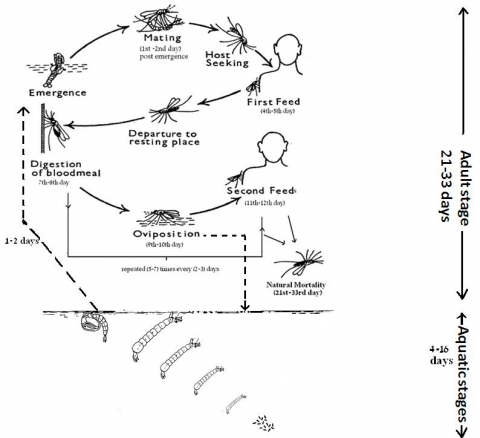Climate Change and Resurgence of Mosquito-borne Viral Diseases
Team Member: Osama Mekki Seidahmed
What are these diseases?
Mosquitoes can carry many viral diseases, such as dengue fever, West Nile virus and Rift Valley fever. Dengue is transmitted mainly by Aedes species in the tropics. West Nile virus is transmitted by Culex species.

Why is it important to consider climate when studying these diseases?
Mosquito-borne diseases often show regular seasonal patterns in incidence because of the sensitivity of the mosquito vectors to climatic variables.
In the last decade there has been an increase in the frequency and intensity of mosquito epidemics. Both climate and societal factors are important for explaining these changes in epidemics. Because mosquito species occupy different ecological niches, they exhibit differential sensitivity to climate change.
What are our project goals?
We aim to:
1) Develop a model that is sensitive to forecast epidemics of mosquito-borne diseases.
2) Assess the impact of climate change on the resurgence of mosquito-borne diseases around the world.
3) Simulate the impact of mosquito control interventions to determine the best management strategies for each epidemic situation.
What are our tools?
The HYDREMATS model will be further developed to allow for simulation of other mosquito-borne diseases. The model will be tested in the field to ensure it is capable of detecting past outbreaks and can provide reliable predictions of future outbreaks.
What is the expected outcome?
Public health systems in many disease-endemic countries respond late to epidemics of mosquito-borne diseases. A comprehensive model will be a cornerstone in improving early warning systems, but will be only one part of furthering our understanding of the factors involved in epidemic genesis.
